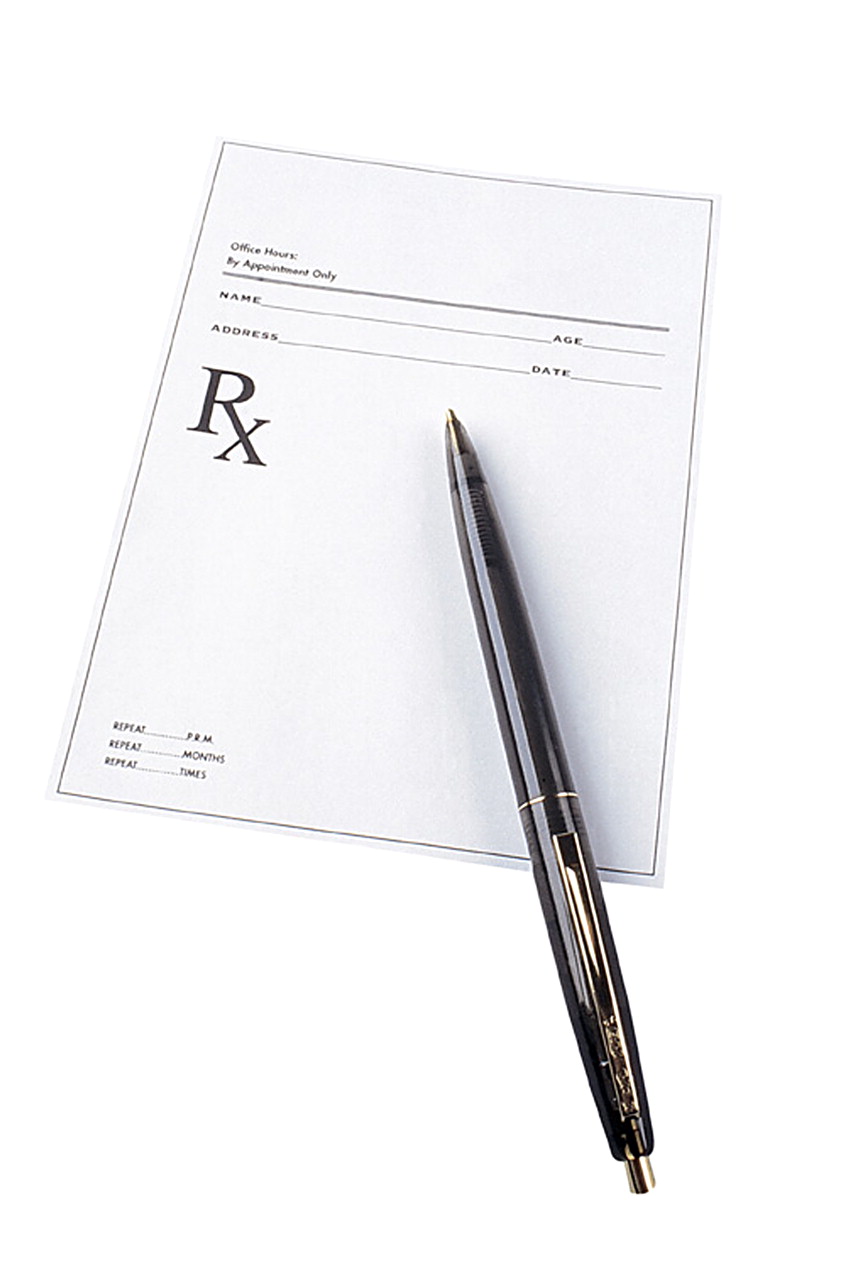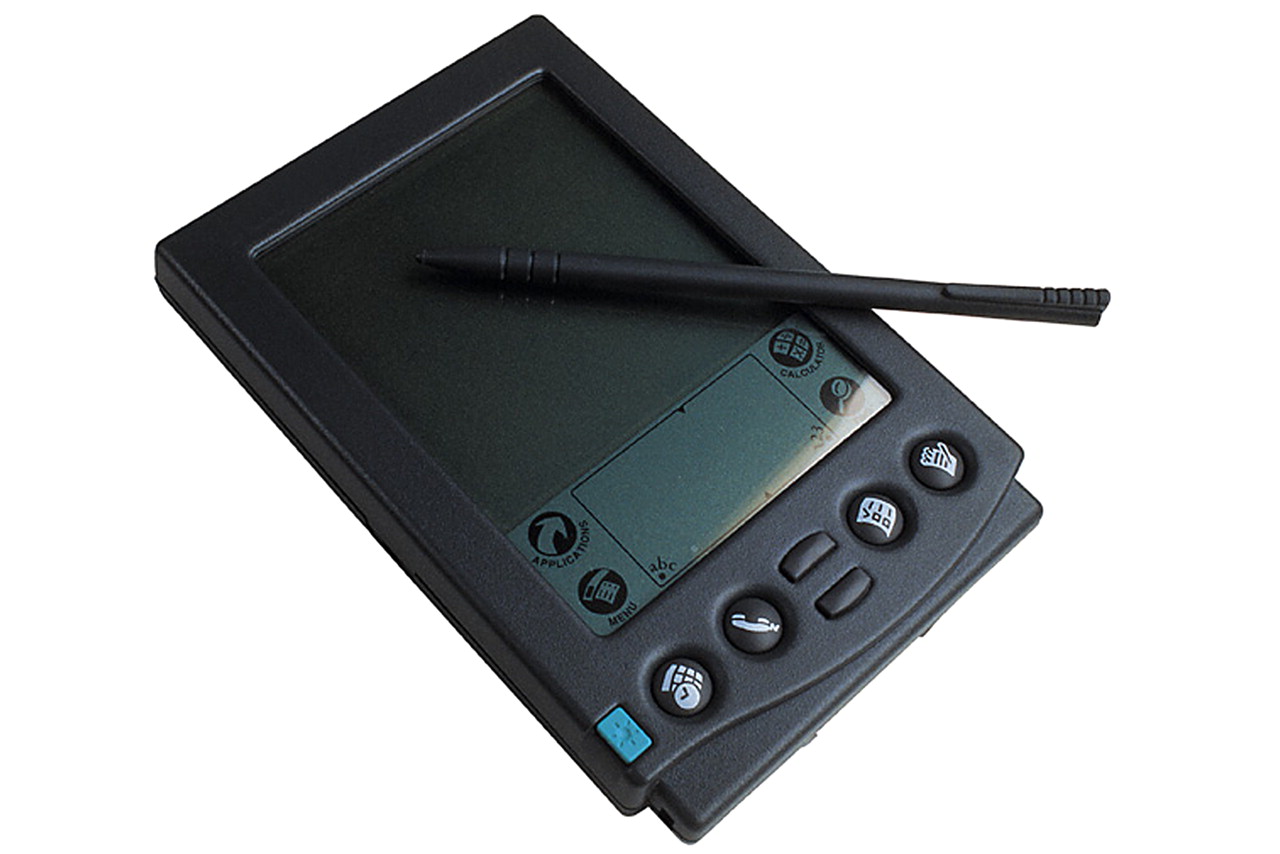E-Prescribing Seems Inevitable But Reception Is Mixed
The prescription pad—that time-honored trademark of medical practice—may someday be a museum piece.
Electronic prescription transmission (e-prescribing, sometimes denoted by the shorthand eRx) is coming soon to your office, a dress-rehearsal, advocates say, for the digital revolution that will overtake America's health care system when it converts to an electronic health record (EHR) system. Believers say e-prescribing is more convenient for patient and physician, saving time and money.

And most important, it has been linked with dramatic reductions in prescribing errors that have resulted in sickness and death.
The Bush administration, political leaders from both parties, physician groups including APA, and private-sector software manufacturers have all begun maneuvering toward the realization of a national health information network, a vision of rapid and secure electronic transfer of patient medical information across systems and over the span of a patient's life (Psychiatric News, September 16, 2005).
It is a vision that would essentially relegate the time-honored, paper-based medical chart to the dustbin of history, and it is one in which e-prescribing is an integral—and perhaps preliminary—piece.
Not everyone is thrilled with the prospect. The confidentiality of medical information in the electronic future is a matter of serious concern for many in medicine, especially psychiatrists. APA's corresponding committees on Electronic Health Records and on Confidentiality are working on position papers to outline the vital issues with regard to privacy.
But as is the case with the electronic medical record itself, the benefits of e-prescribing appear to be so tempting for all parties—physicians, patients, and the health care system generally—that there is an aura of inevitability about the movement.
“E-prescribing is coming, whether people like it or not,” said psychiatrist Marc Graff, M.D., a partner physician with the Southern California Permanente Group and a member of APA's Corresponding Committee on Electronic Health Records. “I think it's just a matter of time—not if, but when. And I believe it will result in better clinical care.”
Most Experience in Closed Systems
Yet for all its apparent benefits, e-prescribing, like the electronic record itself, is not without hurdles to overcome before it is widely accepted.
Robert Plovnick, M.D., M.S., informatics and performance-measure specialist in APA's Office of Quality Improvement and Psychiatric Services, said that a number of studies indicate that only a fraction of the nation's physicians—between 5 percent and 18 percent, depending on the study—have adopted some form of electronic prescribing.
Most of those who have taken the plunge are physicians working in large, closed systems such as the Department of Veterans Affairs and, in the private sector, the Kaiser Permanente Group. The VA has been working with a full-scale EHR system for several years, and Kaiser is now rolling out its own.
Smaller physician groups have been slower to adopt e-prescribing systems. According to a January 2006 report by the California Healthcare Foundation titled “The Prescription Infrastructure: Are We Ready for E-Prescribing?,” the cost for a stand-alone e-prescribing application (that is, one that operates independently of a full-scale EHR system) is between $1,500 and $3,000.
That may be a relatively small price to pay for the benefits that can accrue down the road from greater efficiency. But Plovnick said that another inhibiting factor is the fact that much of the cost savings is liable to be reaped not by the physician, but by the health plan or prescription benefit manager.
Moreover, cost is not the only inhibiting factor: some practices may be reluctant to adopt an e-prescribing system without full-scale investment in all the other components of an EHR system.
A buzzword in the field of health information technology (IT) is“ interoperability,” the ability of information software systems to“ talk” to each other to allow seamless transfer of information across the health care landscape—a concept that presupposes wide-spread adoption of computerization.
So the same conundrum complicating investment in an EHR also vexes physicians contemplating an e-prescribing system: How do they know if the software they purchase will be compatible with other systems as EHR systems evolve in coming years? This concern has left many physicians reluctant to make a substantial investment in a product that may need to be replaced in five years.
The question of whether to adopt eRx independent of a full-scale EHR system is hotly debated within health IT circles.
“There is wide disagreement about whether eRx can—or even should—succeed in the absence of a complete electronic health record,” according to a report from the California Foundation for Healthcare. “A standalone eRx application... costs considerably less than most EHRs and, when introduced, requires fewer changes in a physician practice. Proponents of eRx claim that standalone eRx applications are an intermediate step to EHRs, which, they believe, are still a decade away from full adoption. However, stand-alone eRx does not offer most EHR features.... Some EHR proponents suggest that if stand-alone eRx succeeds, it will ultimately slow the wide-spread adoption of EHRs.”
But for small group practices, piecemeal adoption of EHRs may make sense; an e-prescribing system, for instance, may be of more value to a small group practice than to a large group “whose greater concern is reducing the cost of chart pulls and transcriptions rather than fixing prescription workflow problems,” according to the California Foundation for Healthcare report.
“Consequently, for the vast majority of doctors in small practices, adoption of these technologies will likely be a collage of stand-alone eRx and EHR,” the report concluded.
Companies Offer Connectivity
Despite the hurdles involved in making the transition, psychiatrists at Kaiser and the VA who have experience with e-prescribing say they would not turn back the clock.
They emphasize the practical efficiency of a process that eliminates time-consuming faxes and phone calls to and from patients and pharmacies. And they extol the power of a system that puts enormous amounts of information at a doctor's fingertips.

“Whenever a patient arrives—and I have over 1,500 patients—I can get a snapshot right away of every medication he or she is on,” Graff told Psychiatric News.
He said that the Kaiser e-prescribing system, known as E-Script, has been in place for several years, a preliminary step to the rollout of Kaiser's Epic software for EHRs. (Epic is already up and running at Kaiser in other areas of the country.)
Graff described a system in which the choice of medication, dosage, and refill duration are automated and virtually fail-safe, with a 10-minute window in which physicians can review the order for inaccuracies or typographical errors before it is sent off to the pharmacy. A separate application that can be run simultaneously with E-Script provides information about potential drug-drug interactions, he said.
For physicians working in closed systems like Kaiser, with its own internal pharmacy, eRx may be a natural. But how will it work for physicians whose patients may go to any of dozens of local pharmacies?
Plovnick reported that several companies are now offering electronic connectivity between physician offices and chain and community pharmacies in anticipation of widespread adoption of eRx. Among these are SureScripts, at<www.surescripts.com> and RxHub, at<www.rxhub.com>.
SureScripts was founded in 2001 by the National Association of Chain Drug Stores and the National Community Pharmacists Association. RxHub was the creation in the same year by three leading pharmacy benefit managers, AdvancePCS, Express Scripts, and Medco Health Solutions.
Direct Provider-Entry Prevents Errors
It is at the VA where e-prescribing appears to have reached its highest level of maturity so far in efficiency, automation, and error prevention.
Psychiatrist Peter Fore, M.D., also a member of APA's Corresponding Committee on Electronic Health Records, said that the VA's e-prescribing system—a component of a full-scale EHR system—is graphically driven, providing point-and-click convenience.
The clinician logging into the system can pull up what looks like a typical medical chart for any patient, with a series of tabs that can be selected depending on what the clinician needs to do; medications are grouped according to class—antidepressants on one screen, with standard dosages and tabs for modifying orders.
Fore told Psychiatric News a key feature of the VA eRx system is direct provider entry. “This means physicians have to actually enter the order themselves as opposed to having a clerk enter it,” he said.“ The problem with letting others do the entry is that you get all kinds of handwriting and transcription errors. When we initiated direct provider entry, it dramatically decreased the error rate.”
Fore is acting director of the mental health service line at Jesse Brown VA Hospital in Chicago.
Before the order goes to the pharmacy, the system checks for interactions with other drugs taken by the patient, providing pop-up alerts to the clinician if the dosage selected is not standard or if the patient had a prior allergic reaction to the medication. The system will also check critical lab values that may affect the selection of medication or dosage, Fore said.
Finally, there is an order review during which the physician can see the prescription before attaching an electronic signature. “Basically the system asks the clinician, `Are you sure you want to do this?'” Fore explained. “The physician always has the option of overriding the alert, which may require a written explanation.”
Computerization of error prevention extends to the inpatient unit. There, medications come from the pharmacy in a plastic bag with a bar code; each patient has a bar code on his or her wristband, and nurses carry a laptop that scans the codes to make sure there is a match between the patient's and medication's bar codes, Fore said.
Are there any downsides to the system? Fore and Graff agreed that computerization renders everyone a prisoner of the system's “bad hair” days; when it's down—which both say is rare—everything stops.
But Fore said he is a fan of e-prescribing and that for most VA physicians there is no turning back. “There was some reluctance at first on the part of clinicians,” he said. “Some of them thought it was demeaning having to type in their own orders. But with time and experience, everyone has bought into the system. There is really no other way to prescribe.” ▪



